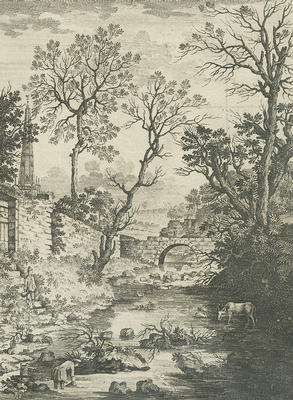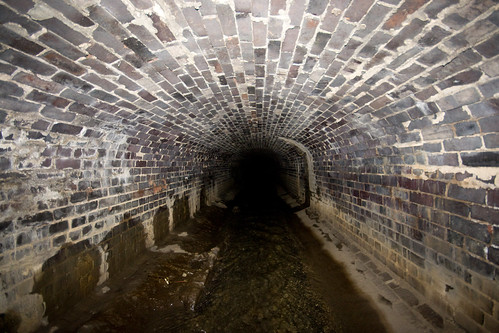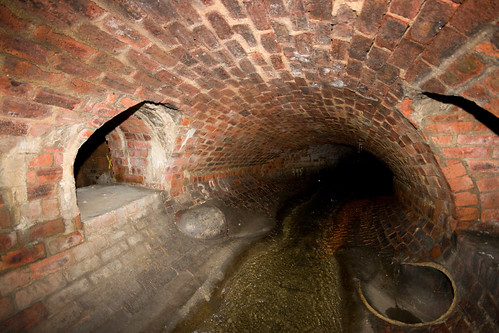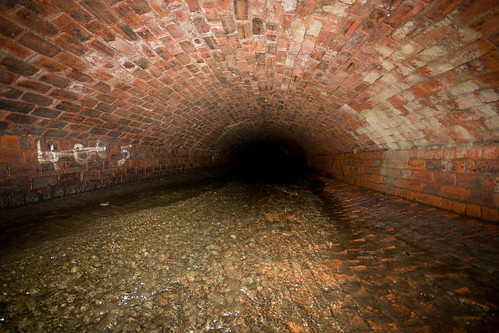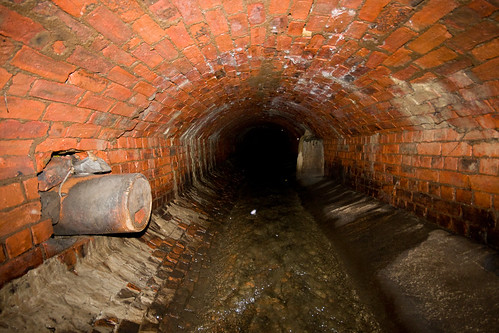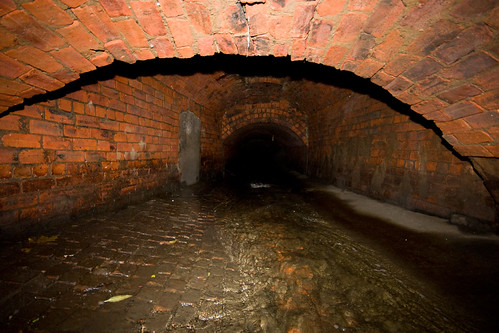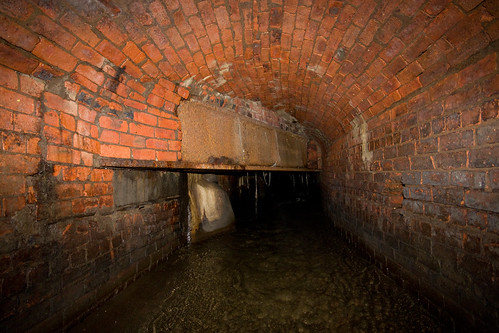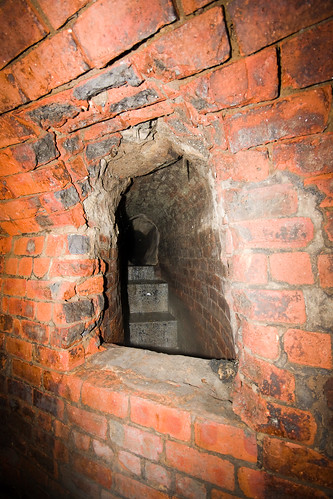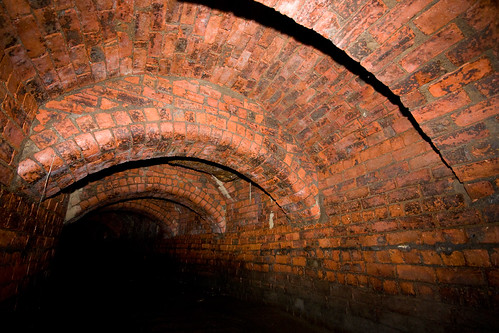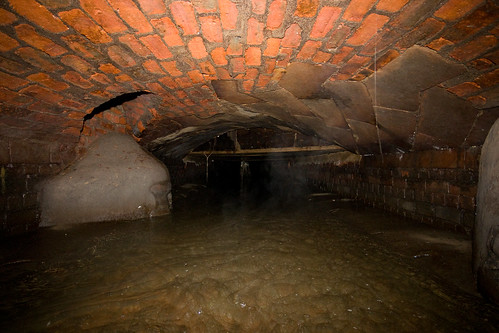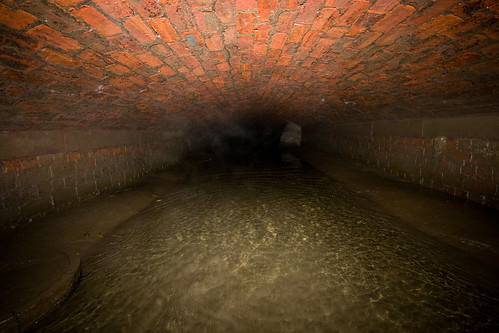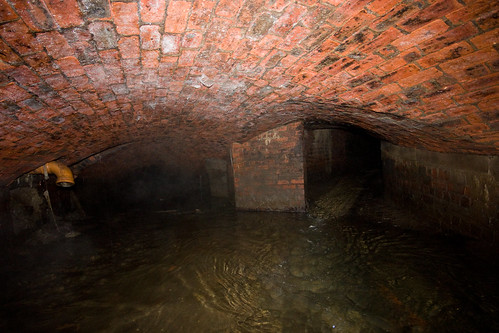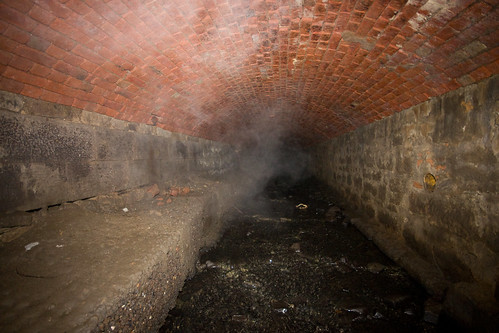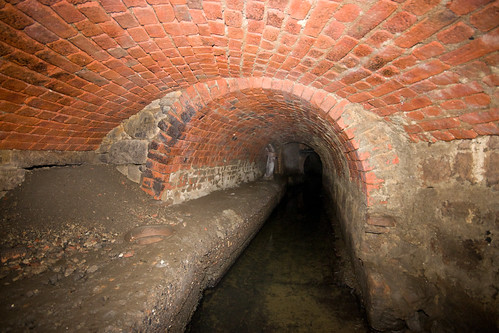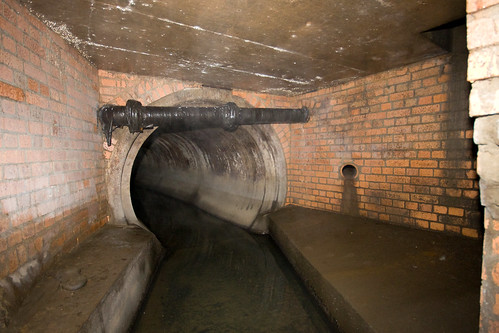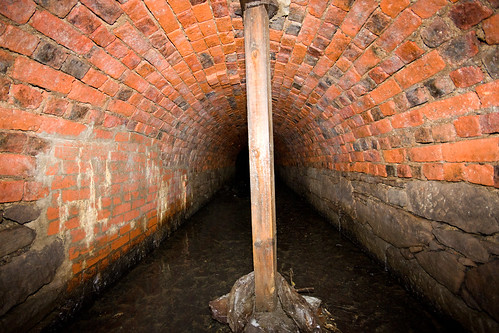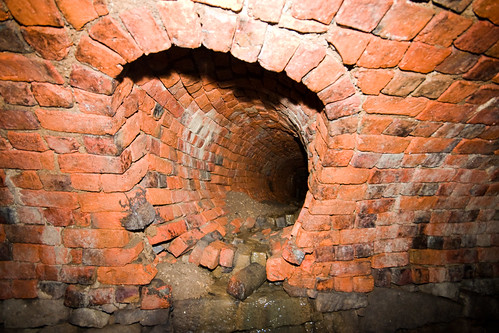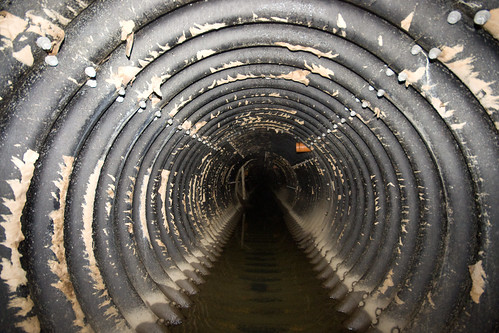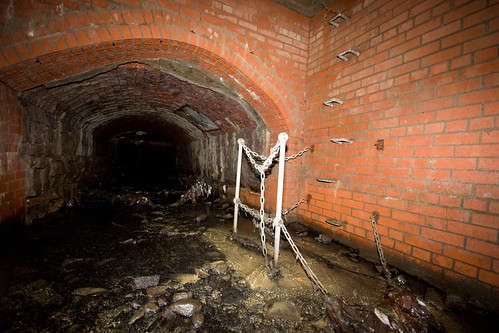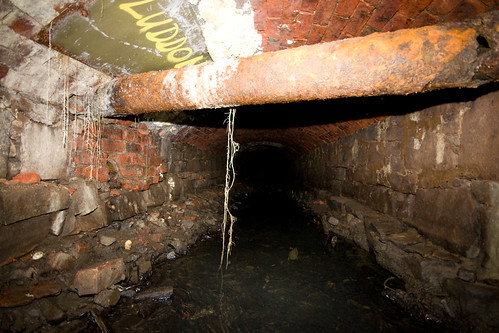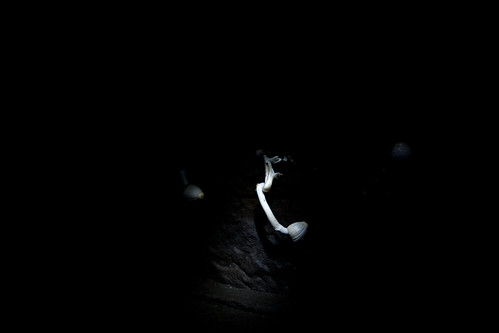The City of Glasgow's name comes from the Gaelic Glasgu, meaning dear green place - the dear green place in question was a beautiful wooded valley beside the Molindenar Burn where St. Mungo (also known as Kentigern) founded a church in the 6th Century.
The Molindenar Burn kept it's importance in Glasgow's history for a long time - the later cathedral was built approximately on the site of St. Mungo's church, and a bridge (the Bridge of Sighs) was built over the burn to the Necropolis. The burn also marked the eastern border of the city, and later was used to power the first of the mills that sprung up in the city.
The city outgrew the burn, though, and in the 1870s it was culverted over and almost forgotten - Wishart Street now runs along it's path next to the cathedral. It's exposed at one small section next to the old Great Eastern Hotel, so I went for a look.
The exposed section:
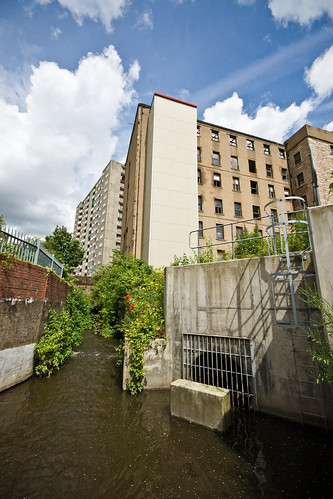
The burn runs under Duke Street, and takes a sharp turn to the right:
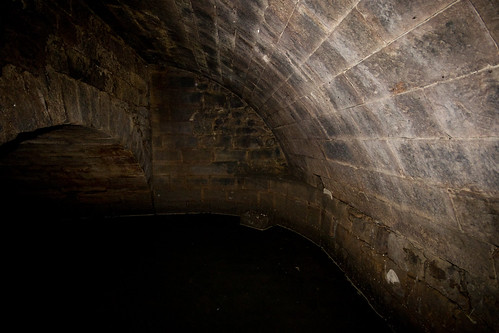
It starts off stone-lined:
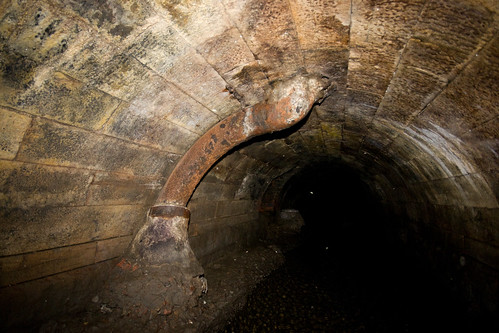
Turns to oval brick:
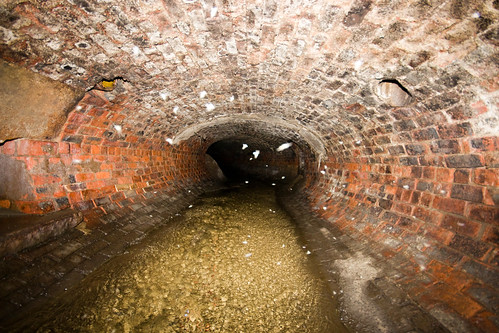
Then very low concrete:
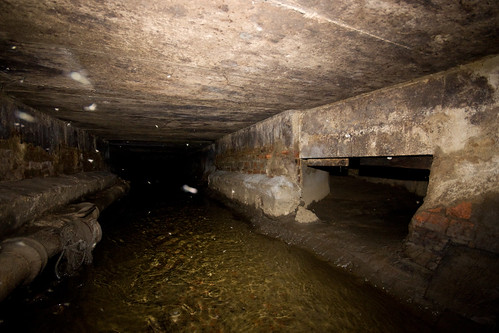
Then steel pipe, which takes a sharp turn then carries on straight for a while:
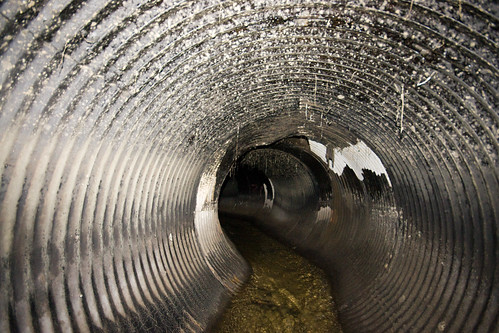
Before turning into a lovely 7' high brick tunnel:
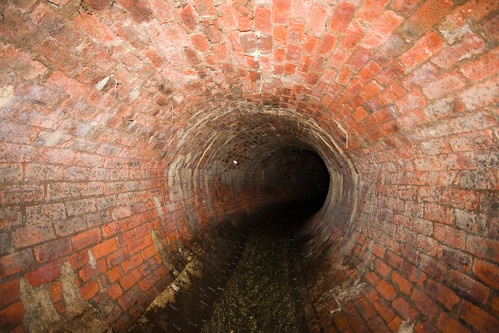
This carries on for quite a while, past a blocked-off side flue:
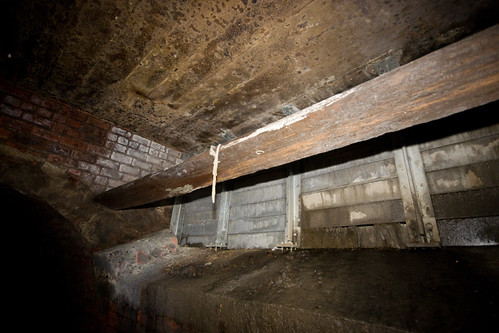
Looking up at a manhole on Wishart Street (I think) - note the slates used as a platform:
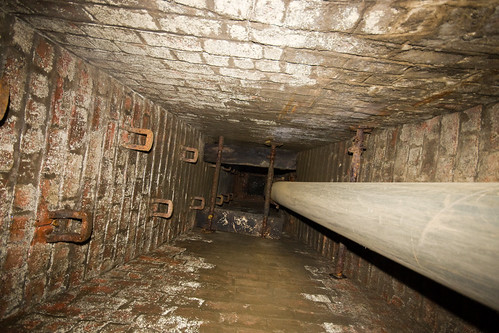
And a more modern access shaft - I'm not sure why there are two ladders:
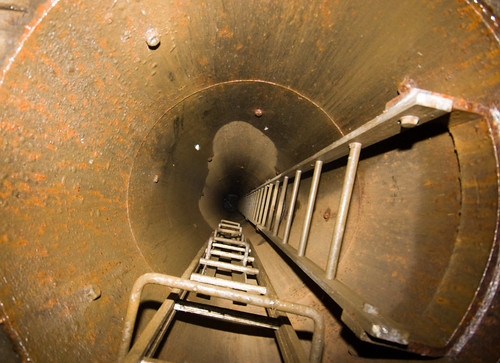
Then, stalactite city:
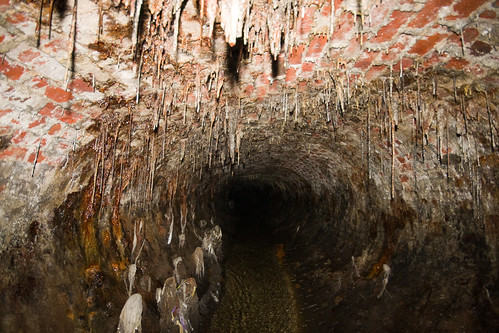
In places, it looked like a natural cave:
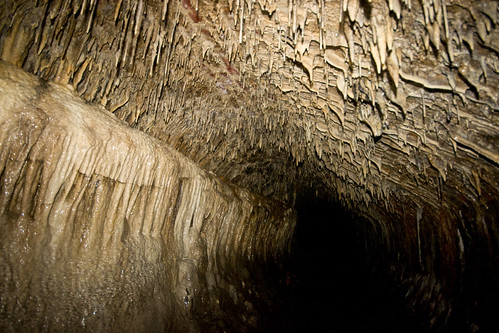
With only a little brick showing through:
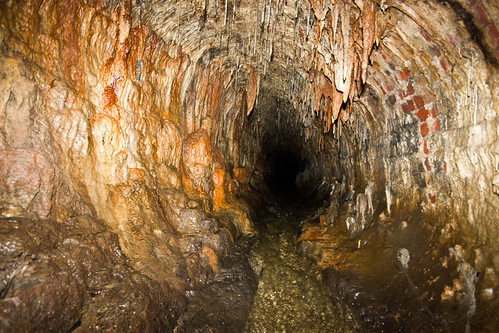
And old pipes slowly filling up:
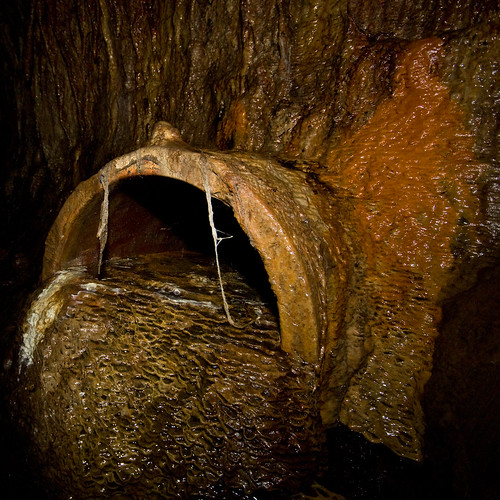
I met some of the locals:
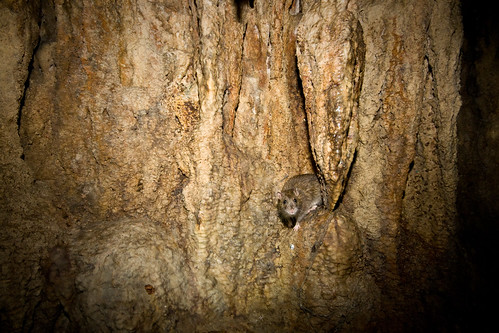
It turned back into steel pipe:
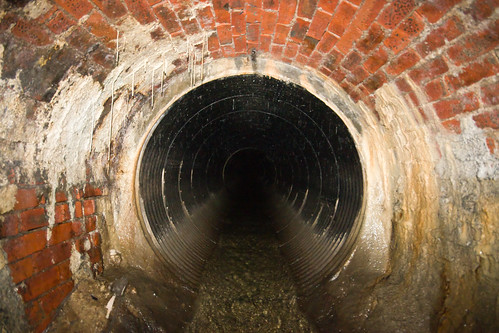
Then what looks like an open channel that's been concreted over:
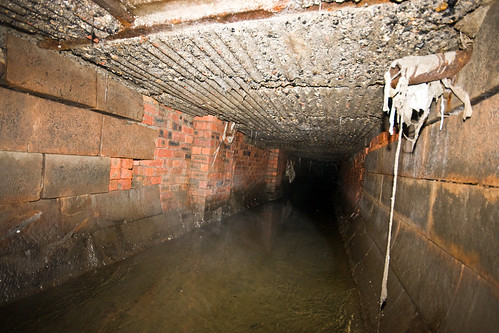
A few more stalactites:
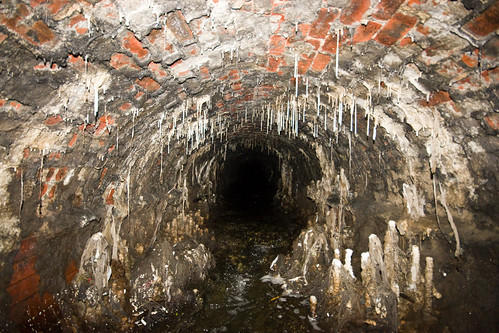
And a very low chamber with two inlets - I didn't feel like crawling any further:
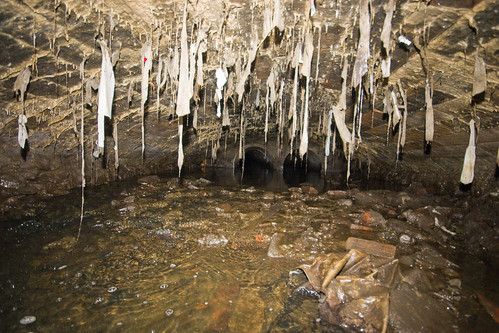
Returning to the start, I went downstream a bit:
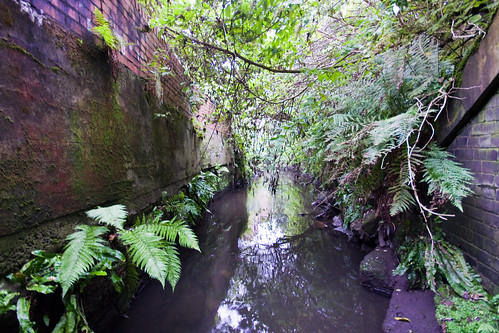
Into the next tunnel:
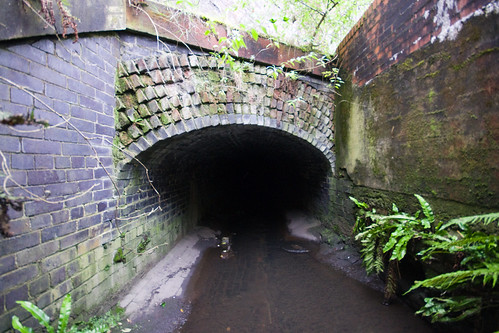
And carried on for about 10 minutes before turning back - downstream is a mission for another day.
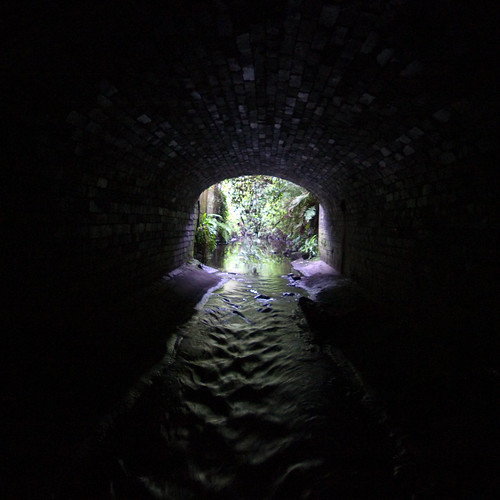
I'm not sure how far I got - it certainly felt quite far, I think I got all the way along Wishart Street to Alexandra Parade. Looking at some old maps, the burn split in two about there, which would make sense with what I saw.
There are a bunch more pictures in my Flickr set...
The Molindenar Burn kept it's importance in Glasgow's history for a long time - the later cathedral was built approximately on the site of St. Mungo's church, and a bridge (the Bridge of Sighs) was built over the burn to the Necropolis. The burn also marked the eastern border of the city, and later was used to power the first of the mills that sprung up in the city.
The city outgrew the burn, though, and in the 1870s it was culverted over and almost forgotten - Wishart Street now runs along it's path next to the cathedral. It's exposed at one small section next to the old Great Eastern Hotel, so I went for a look.
The exposed section:

The burn runs under Duke Street, and takes a sharp turn to the right:

It starts off stone-lined:

Turns to oval brick:

Then very low concrete:

Then steel pipe, which takes a sharp turn then carries on straight for a while:

Before turning into a lovely 7' high brick tunnel:

This carries on for quite a while, past a blocked-off side flue:

Looking up at a manhole on Wishart Street (I think) - note the slates used as a platform:

And a more modern access shaft - I'm not sure why there are two ladders:

Then, stalactite city:

In places, it looked like a natural cave:

With only a little brick showing through:

And old pipes slowly filling up:

I met some of the locals:

It turned back into steel pipe:

Then what looks like an open channel that's been concreted over:

A few more stalactites:

And a very low chamber with two inlets - I didn't feel like crawling any further:

Returning to the start, I went downstream a bit:

Into the next tunnel:

And carried on for about 10 minutes before turning back - downstream is a mission for another day.

I'm not sure how far I got - it certainly felt quite far, I think I got all the way along Wishart Street to Alexandra Parade. Looking at some old maps, the burn split in two about there, which would make sense with what I saw.
There are a bunch more pictures in my Flickr set...




